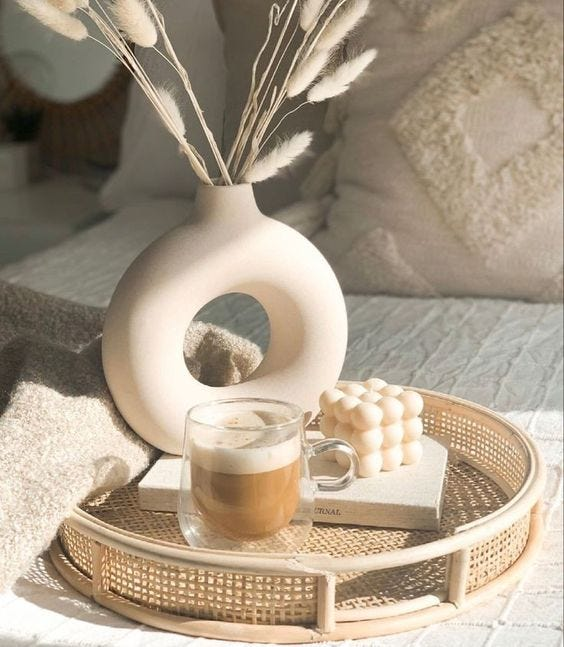Fabrics are the core of decorating, each with its personality. They create focal points or subtle designs with color, pattern, and texture — simple, yet powerful. Experiment, mix, and transform spaces uniquely. Embrace creativity, bring ideas to life, and make every space special.
How to start
To create a unique and cohesive design, think beyond individual fabrics and envision a fabric family. The key lies in the collective effect they produce. Once you’ve chosen all the fabrics, label each and thoughtfully decide where they fit, considering the required amount for each area. This approach ensures a harmonious feel and look throughout the room, making it truly one of a kind.
Add texture
To create a truly unique design with fabrics, incorporating various textures is essential. Avoid a flat look by gathering a diverse range of fabric samples. Playfully experiment with different combinations until you achieve a result that brings you complete satisfaction. Don’t worry about having too many samples; gradually, you’ll eliminate those that don’t quite fit, considering both texture and color tones. This process will lead you to a captivating and distinct fabric arrangement that elevates your design to the next level. Embrace the creativity and discover the perfect fabric mix that sets your space apart.
Think where the fabric will go
when working with fabrics, it’s crucial to think about their placement and purpose in the design. Consider where each fabric will go and how it will contribute to the overall scheme.
Functionality: Determine the primary function of the space and choose fabrics accordingly. For example, durable and stain-resistant fabrics are suitable for high-traffic areas like living rooms or dining spaces, while softer and more delicate fabrics might be better suited for bedrooms or decorative accents.
Focal Points: Identify key areas or elements in the room that you want to highlight. Fabrics can be used to draw attention to these focal points, such as through bold upholstery or vibrant draperies.
Color Harmony: Ensure that the fabric colors complement the overall color palette of the room. Choose fabrics that either blend harmoniously with the existing colors or create a deliberate contrast for visual interest.

Texture and Pattern: Think about how different textures and patterns will interact with each other and the surrounding decor. Mixing various textures can add depth and create a dynamic visual experience.
Balance: Strive for a balanced distribution of fabrics throughout the space. Avoid overusing one particular fabric or pattern, as it can overpower the design.
Coordinating Elements: Consider how the fabric choices will coordinate with other design elements, such as furniture, wall colors, and accessories. Aim for a cohesive and unified look.
Natural Light: Keep in mind how natural light will affect the appearance of the fabrics. Some fabrics may appear differently in various lighting conditions, so take this into account when making selections.
Cushions & Rugs
Combining cushions, throws, and rugs in interior design offers a simple yet effective way to transform the look and feel of a room. Cushions, available in various colors, shapes, and sizes, act as the finishing touch, adding a burst of color and personality to any space. By strategically selecting cushions, a room can transition from formal to casual effortlessly. Furthermore, changing cushion colors and fabrics allows for an inexpensive seasonal update. Mixing different sizes and textures of cushions elevates the overall design, bringing freshness to the room.
Together, these soft furnishings create a dynamic trio that empowers homeowners to refresh their spaces with ease and adapt to evolving tastes with Whispering Homes.
By: Whispering Homes



